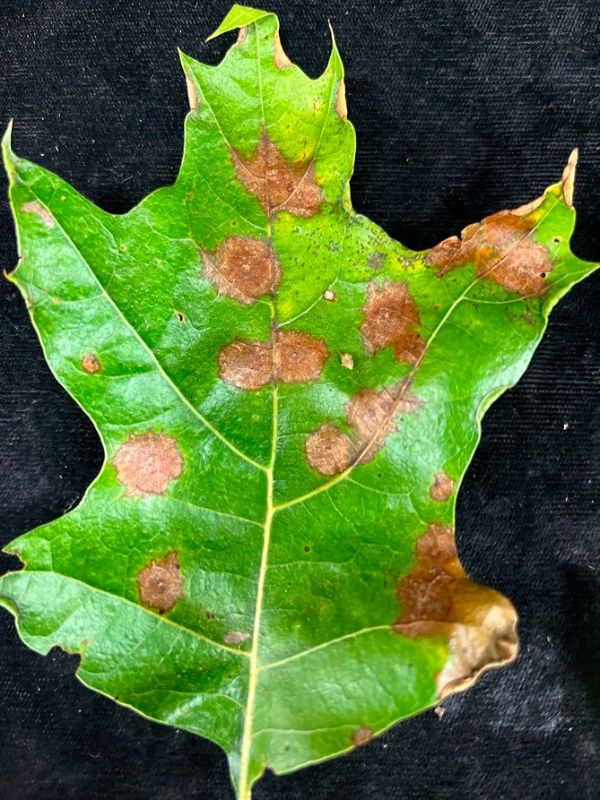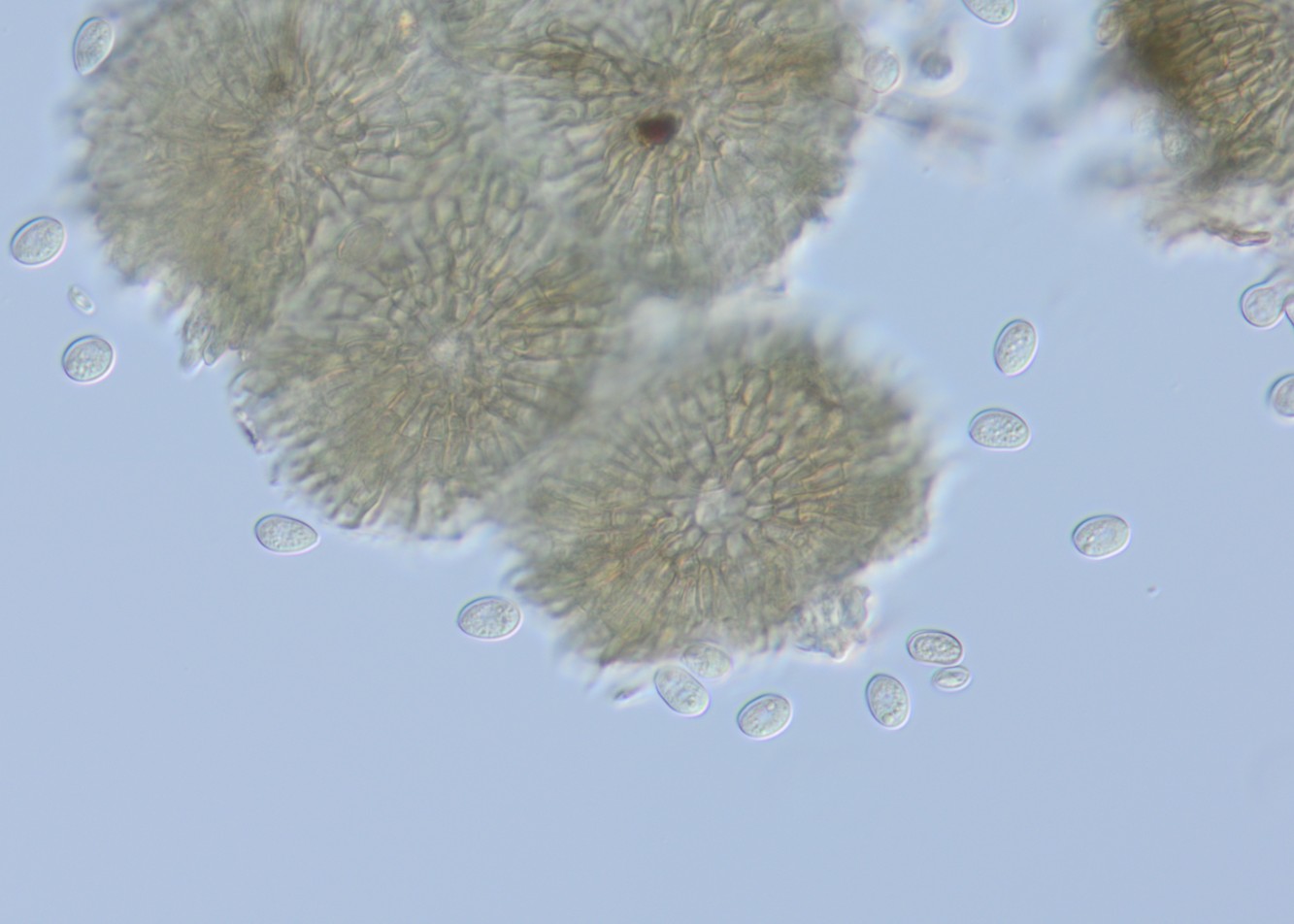
Tubakia Leaf Spot
Pathogens
Tubakia spp. (formerly Actinopelte spp.)
Hosts
Tubakia spp. typically infect all species of oaks (Quercus), with red oaks being the most susceptible. Tubakia spp. has also been found on maples (Acer), hickory (Carya), Eastern redbuds (Cercis), ashes (Fraxinus), sweetgum (Liquidambar), sumacs (Rhus), sassafras, and elms (Ulmus).
Signs and Symptoms
The symptoms of tubakia leaf spot can resemble those of oak anthracnose or oak wilt. Commonly seen symptoms include small or large red-brown spots on the leaves. Spots can appear anywhere on the leaf, including the veins. If the spots coalesce or increase in size, they can cause the leaf to die and drop prematurely. Upon a closer look, the fruiting structures of Tubakia spp. (pycnothyria) can be seen on the underside of the leaves and on the leaf veins. The fruiting structures are very small in size and closely resemble ground black pepper.

Spread
Tubakia spp. overwinter on dead twigs or leaves and spores are released in the following spring. The spores can be easily spread by wind or rain splash. This disease is more common during years with frequent rainfall, and symptoms are most severe in late summer and early fall.
Management
Tubakia spp. cause aesthetic damage to foliage but do not kill infected trees. To reduce spread, remove and dispose of fallen leaves, twigs, and branches that may be infected. Improving air circulation by pruning dense canopies can also help reduce spread and limit fungal inoculum. Fungicide sprays are not recommended for landscape trees and are generally unnecessary for this disease.



 Print
Print Email
Email




